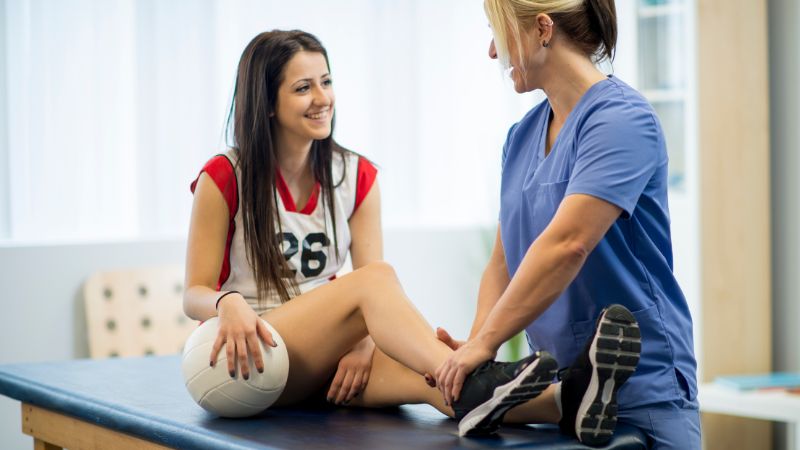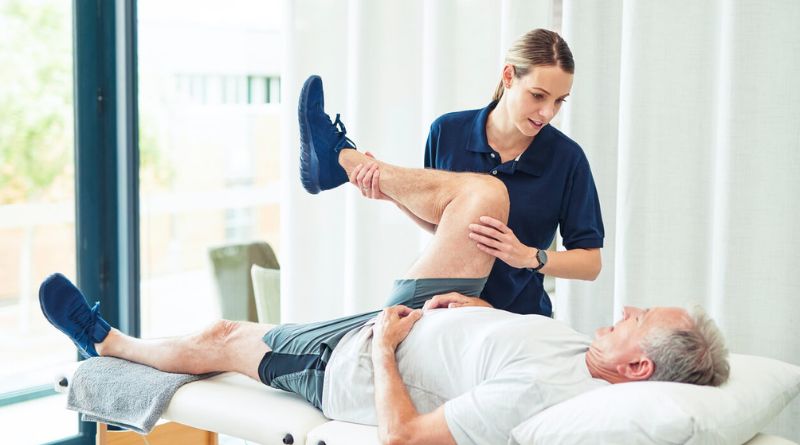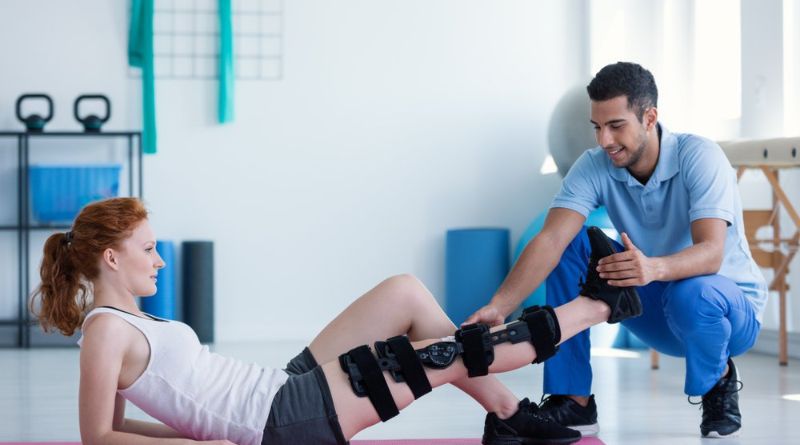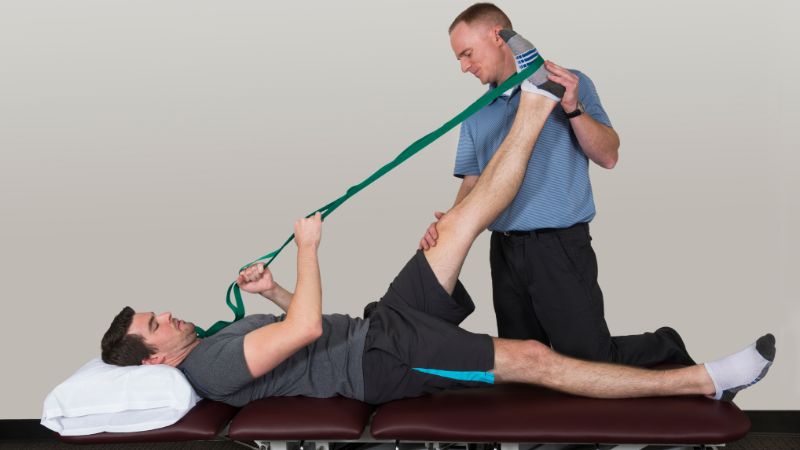Discover the empowering benefits of physical therapy tailored specifically for addressing women’s health issues. Physical therapy plays a crucial role in managing and improving various conditions that disproportionately affect women throughout different stages of life. From pregnancy-related pelvic pain to menopausal osteoporosis prevention, physical therapists employ specialized techniques to enhance pelvic floor strength, alleviate pain, and restore mobility. This blog explores nine key benefits of physical therapy for women’s health, highlighting how targeted exercises, manual therapy, and education contribute to overall well-being. Whether you’re dealing with urinary incontinence, recovering from childbirth, or managing chronic pelvic pain, physical therapy offers personalized care that addresses the unique needs of women, promoting a healthier and more active lifestyle.
Best Benefits of physical therapy for women’s health issues
1. Improved Pelvic Floor Health

Physical therapy plays a crucial role in improving pelvic floor health, which is essential for women’s overall well-being. Pelvic floor muscles support the bladder, uterus, and bowel, and weakness or dysfunction can lead to urinary incontinence, pelvic organ prolapse, and other issues. Physical therapists specialize in pelvic floor rehabilitation, using techniques such as Kegel exercises, biofeedback, and manual therapy to strengthen and coordinate these muscles. By improving pelvic floor strength and control, physical therapy helps reduce urinary leakage, enhance bladder control, and alleviate symptoms of pelvic organ prolapse. This leads to improved quality of life and confidence in daily activities.
Read Also- 8 Benefits of Pelvic Floor Physical Therapy
2. Management of Urinary Incontinence
Urinary incontinence affects many women, especially after childbirth or during menopause. Physical therapy offers effective strategies to manage and reduce urinary incontinence symptoms. Therapists assess pelvic floor function and tailor exercises to strengthen these muscles, improving the ability to control urination. Techniques such as bladder training and biofeedback help women regain bladder control and reduce episodes of leakage. Physical therapy also addresses contributing factors like weak abdominal muscles or poor posture that may exacerbate urinary incontinence. With consistent therapy, many women experience significant improvements in bladder function and reduced reliance on pads or protective garments.
3. Prenatal and Postpartum Care
Physical therapy provides invaluable support during pregnancy and after childbirth. During pregnancy, therapists help women manage musculoskeletal discomfort, such as back pain and pelvic girdle pain, through gentle exercises and techniques that promote optimal posture and alignment. Postpartum, therapy focuses on restoring pelvic floor strength, treating diastasis recti (separation of abdominal muscles), and addressing pelvic pain or incontinence issues that may arise after delivery. Therapists guide women through safe exercises and techniques to facilitate recovery, improve core stability, and promote overall physical well-being during the postpartum period.
4. Treatment of Pelvic Organ Prolapse
Pelvic organ prolapse occurs when the pelvic organs, such as the bladder, uterus, or rectum, descend into the vaginal space due to weakened pelvic floor muscles and ligaments. Physical therapy offers non-surgical treatment options to manage pelvic organ prolapse by strengthening the supportive muscles of the pelvic floor. Therapists teach pelvic floor exercises and techniques to improve pelvic floor muscle tone and support, helping to reduce symptoms like pelvic pressure or bulging. By addressing pelvic floor dysfunction, physical therapy aims to improve pelvic organ support and alleviate discomfort associated with prolapse, enhancing overall pelvic health.
5. Relief from Pelvic Pain
Chronic pelvic pain affects many women and can have a significant impact on daily life. Physical therapy provides effective pain relief strategies through targeted interventions. Therapists use manual therapy techniques, such as soft tissue mobilization and myofascial release, to release tension in pelvic floor muscles and surrounding tissues. Stretching exercises and relaxation techniques further help to alleviate muscular tightness and reduce pain intensity. By addressing the underlying causes of pelvic pain, physical therapy aims to improve mobility, restore normal muscle function, and enhance overall quality of life for women dealing with chronic pelvic pain syndromes.
6. Rehabilitation After Gynecological Surgery

After undergoing gynecological surgery, such as a hysterectomy or pelvic floor repair, women may benefit greatly from physical therapy. Therapists work closely with patients to promote healing, restore mobility, and prevent complications such as scar tissue adhesions. Through gentle exercises, manual therapy, and gradual progression of activity, physical therapy helps women regain strength in the pelvic floor and abdominal muscles. Therapists also provide education on safe movement techniques and strategies to prevent strain during the recovery period, promoting optimal surgical outcomes and faster return to daily activities.
7. Osteoporosis Management and Fall Prevention
Osteoporosis, characterized by reduced bone density and increased risk of fractures, predominantly affects women after menopause. Physical therapy plays a crucial role in osteoporosis management by prescribing weight-bearing exercises and resistance training to improve bone density and strength. Therapists also focus on balance training and fall prevention strategies to reduce the risk of fractures associated with osteoporosis. By promoting safe and effective exercise programs, physical therapy helps women maintain bone health, improve posture, and reduce the likelihood of falls, thereby enhancing overall skeletal health and longevity.
8. Support for Lymphedema Management
Lymphedema, swelling caused by lymphatic system dysfunction, commonly occurs after lymph node removal due to breast cancer treatment. Physical therapy offers specialized techniques to manage lymphedema and improve fluid drainage. Therapists perform manual lymphatic drainage, compression therapy, and prescribe therapeutic exercises to reduce swelling and enhance mobility in affected limbs. Education on skin care, self-management techniques, and the use of compression garments further empowers women to manage lymphedema effectively. Through comprehensive therapy plans, physical therapy supports women in coping with lymphedema and improving their quality of life post-breast cancer treatment.
9. Promotion of Overall Wellness and Fitness

Beyond treating specific health issues, physical therapy promotes overall wellness and fitness for women of all ages. Therapists educate patients on proper posture, body mechanics, and ergonomics to prevent musculoskeletal problems. They design personalized exercise programs that improve cardiovascular health, strength, flexibility, and endurance. By encouraging regular physical activity and healthy lifestyle habits, physical therapy helps women maintain optimal physical function, independence, and quality of life. This proactive approach to health and wellness empowers women to lead active, fulfilling lives while preventing future health complications.
Conclusion
In conclusion, physical therapy provides invaluable support for women’s health, addressing a wide range of issues from prenatal care through postmenopause. By focusing on specialized techniques and personalized treatment plans, physical therapists empower women to manage conditions like pelvic pain, urinary incontinence, and musculoskeletal issues effectively. Whether preparing for childbirth, recovering from surgery, or managing chronic pain, physical therapy promotes strength, mobility, and overall well-being. Invest in your health today and discover how physical therapy can enhance your quality of life and help you achieve optimal wellness at every stage of life.
FAQs
What conditions pertaining to women’s health may physical therapy treat?
Physical therapy can help with a variety of women’s health issues, including pelvic floor dysfunction, urinary incontinence, prenatal and postpartum discomfort, pelvic organ prolapse, and musculoskeletal pain such as back pain and joint stiffness.
How does physical therapy benefit prenatal and postpartum women?
During pregnancy, physical therapy can help women manage musculoskeletal discomfort, maintain mobility, and prepare for labor and delivery. Postpartum, physical therapy aids in recovering pelvic floor strength, treating pelvic pain, and addressing abdominal muscle separation (diastasis recti).





